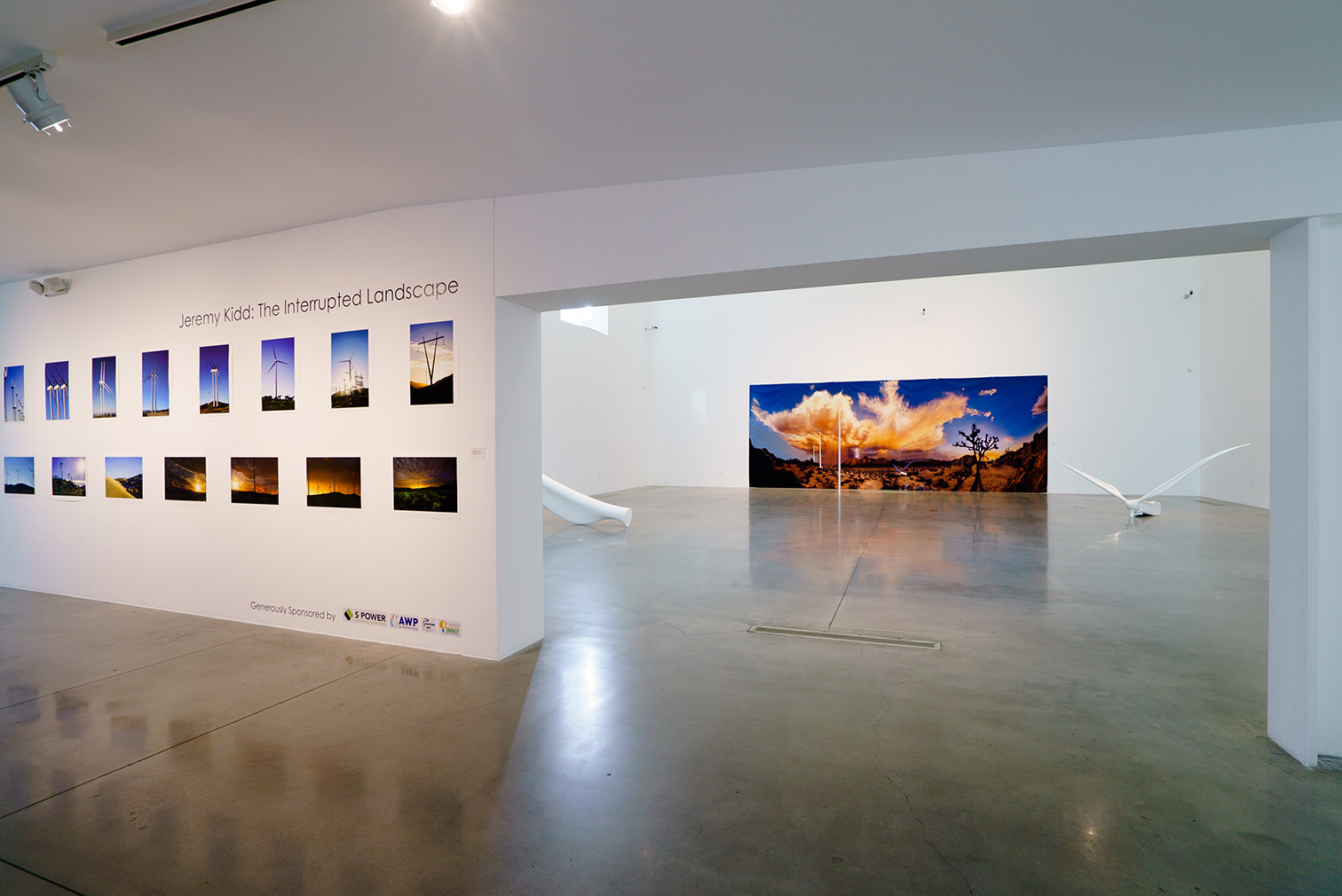Photo-sculptor Jeremy Kidd stares down the clash of the natural with the aerodynamic lines of technology in his bracing installation at the Museum of Art and History at Lancaster. Kidd’s “The Interrupted Landscape” is one of several solo exhibitions currently at MOAH elaborating the theme of “Green Revolution.”

Jeremy Kidd, Desert to Palm 2 – Installation (2015), courtesy of the artist and MOAH.
Kidd was a painter and sculptor before turning his attention to photography. He builds his images almost the way a painter does, in layers, often using more than 100 exposures to produce single images that vibrate with metallic, car-paint colors and a sort of hyper-real sheen. At MOAH he applies that technique to desert landscapes shot in the surrounding Antelope Valley which feature gleaming cream-colored wind turbines. He presents just a few images, though one centerpiece is mural-scale; he augments them with large-scale (but less than life-size) facsimiles of pieces of windmill blades, seemingly sunk in the concrete of the museum floor.

Jeremy Kidd, Filiform Mill (Insect Mill) 1 (2016), courtesy of the artist and MOAH.
Out in nature the size and the placement of modern windmills, with their whirring propeller blades and their industrial, file-upon-file arrays can appear the antithesis of the subtle tones and delicate flora of the desert. But Kidd presents his windmills off the farm, a single rank spaced loosely across one of his surreal-feeling landscapes, all illuminated by several suns set in a desert sky. In this context Kidd seems to embrace the promise of clean energy produced in concert with a pristine environment.
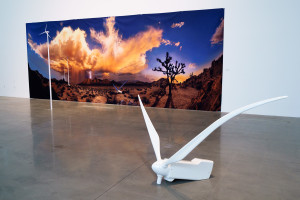
Jeremy Kidd, Saddleback-Butte-Mills 1 Installation (2015), courtesy of the artist and MOAH.
The sculptures in the installation toy with the already-fantastic dimensions of the wind turbines, stretching them, examining them in their particulars. Despite Kidd’s title, this exhibit is not the jeremiad that one might infer, but a playful and open visual treatment of a phenomenon that has corporeal but also social implications.
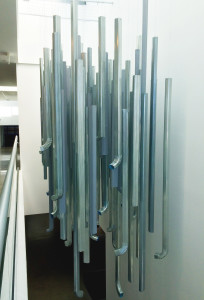
Lynn Aldrich, Silver Lining (2009), courtesy of the artist and MOAH.
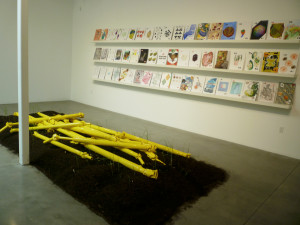
Fawn Rogers, Subject (2016), installation view, courtesy of the artist and MOAH.
That sort of playfulness fits nicely with the museum’s thematic focus on “Green Revolution,” a more whimsical approach than one might expect in a world beset by its crises. Other standout solo exhibits include Lynn Aldrich, with her fanciful drainpipes (Water Feature/Silver Lining), Fawn Rogers’ ventures in seeds and plastic (Subject) and Coleen Sterritt’s mixed, found-media sculptures (Selected Works, 2010-2016), which all share that open, optimistic sensibility. Together they make for an intriguing, aspiring grouping, enough to warrant a field trip to the high-country outpost of Lancaster.
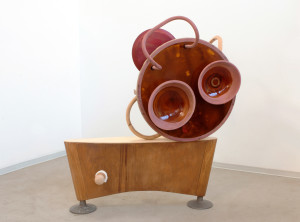
Coleen Sterritt, Ear,near,dear,Hear,Clear (2014), courtesy of the artist and MOAH.
Jeremy Kidd, “The Interrupted Landscape;” Lynn Aldrich, “Water Feature/Silver Lining;” Fawn Rogers, “Subject;” Coleen Sterritt, “Selected Works: 2010-2016;” February 13 – April 17, 2016, at the Lancaster Museum of Art and History, 665 W. Lancaster Blvd, Lancaster, CA 93534, www.lancastermoah.org.

